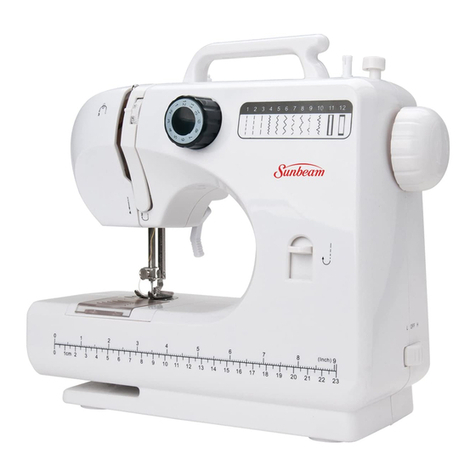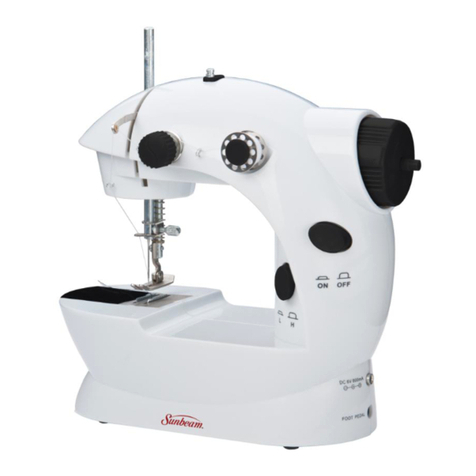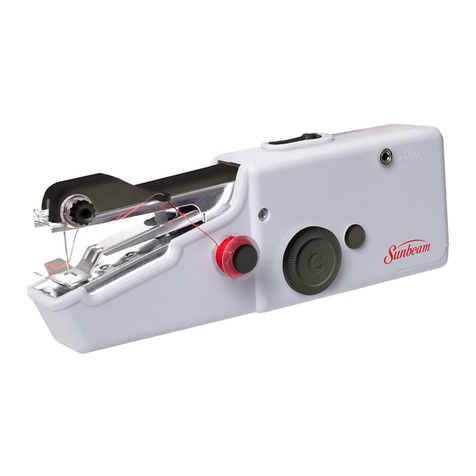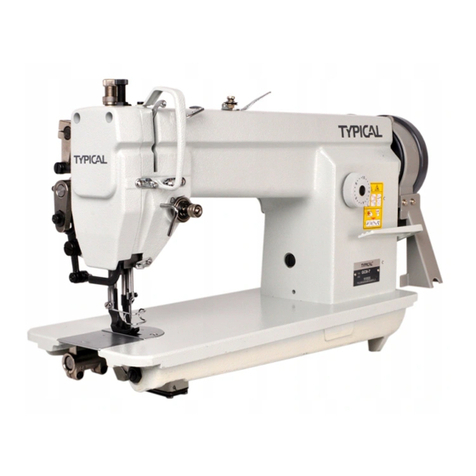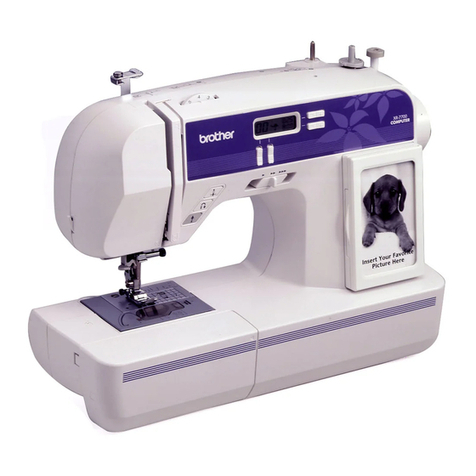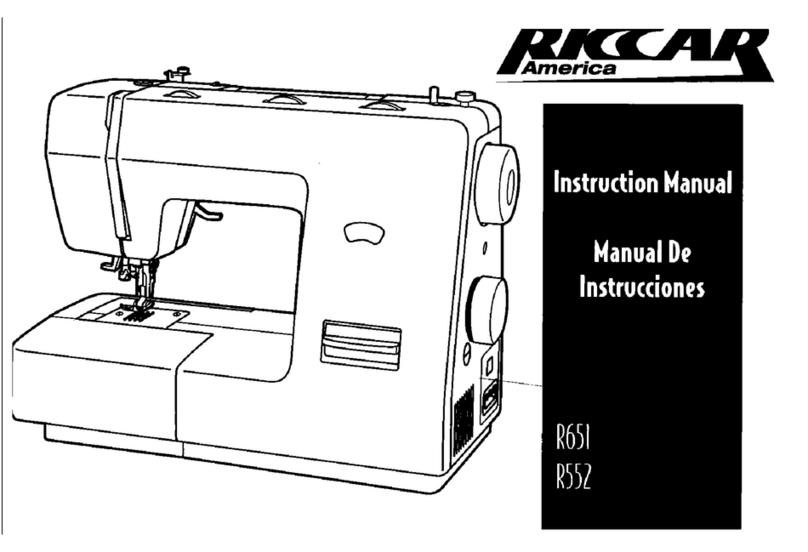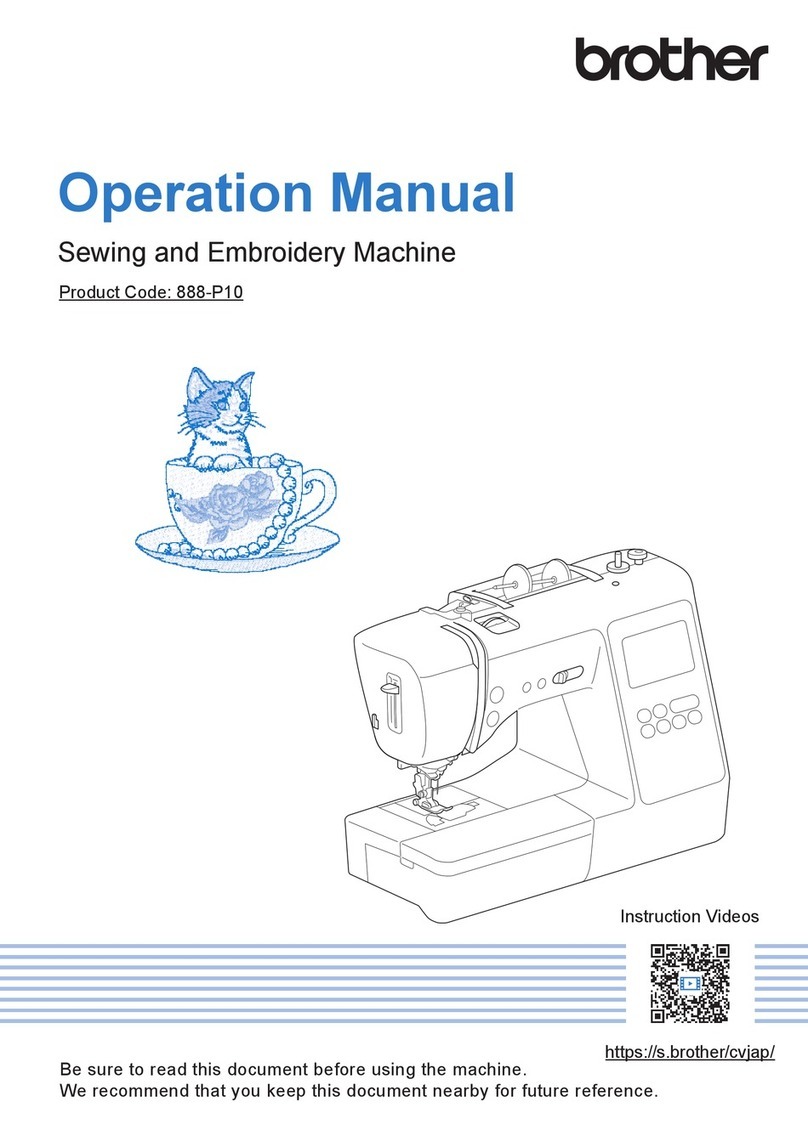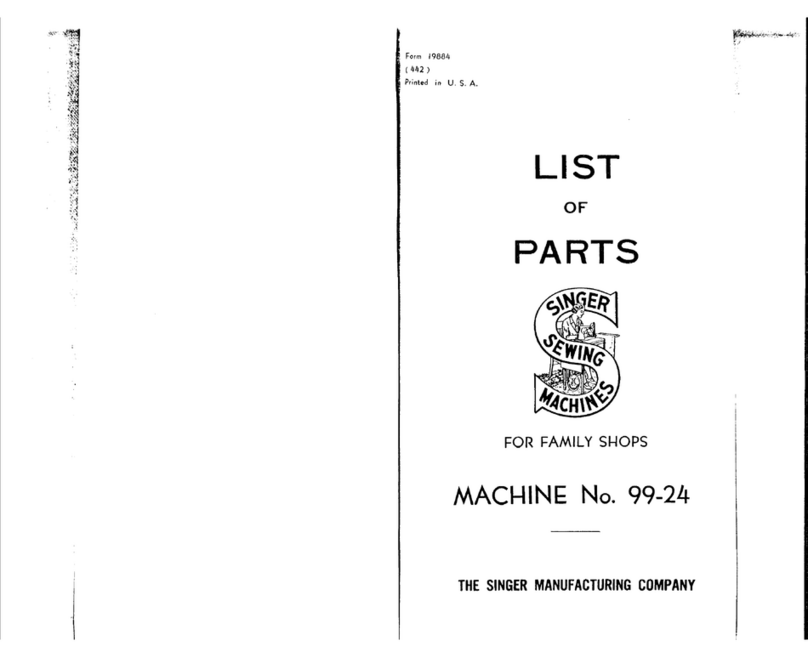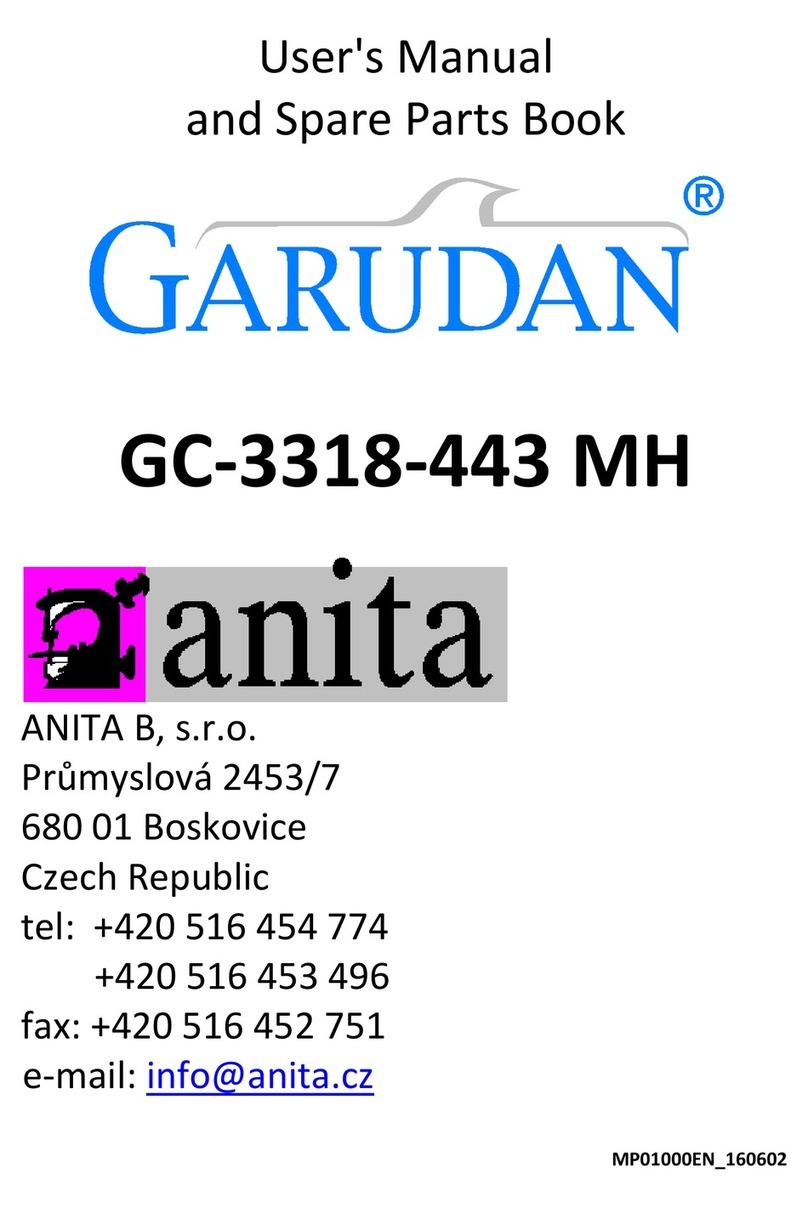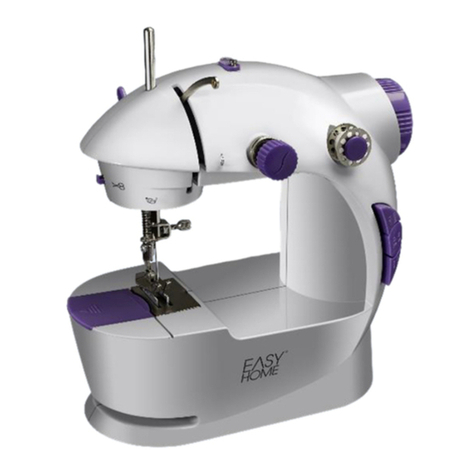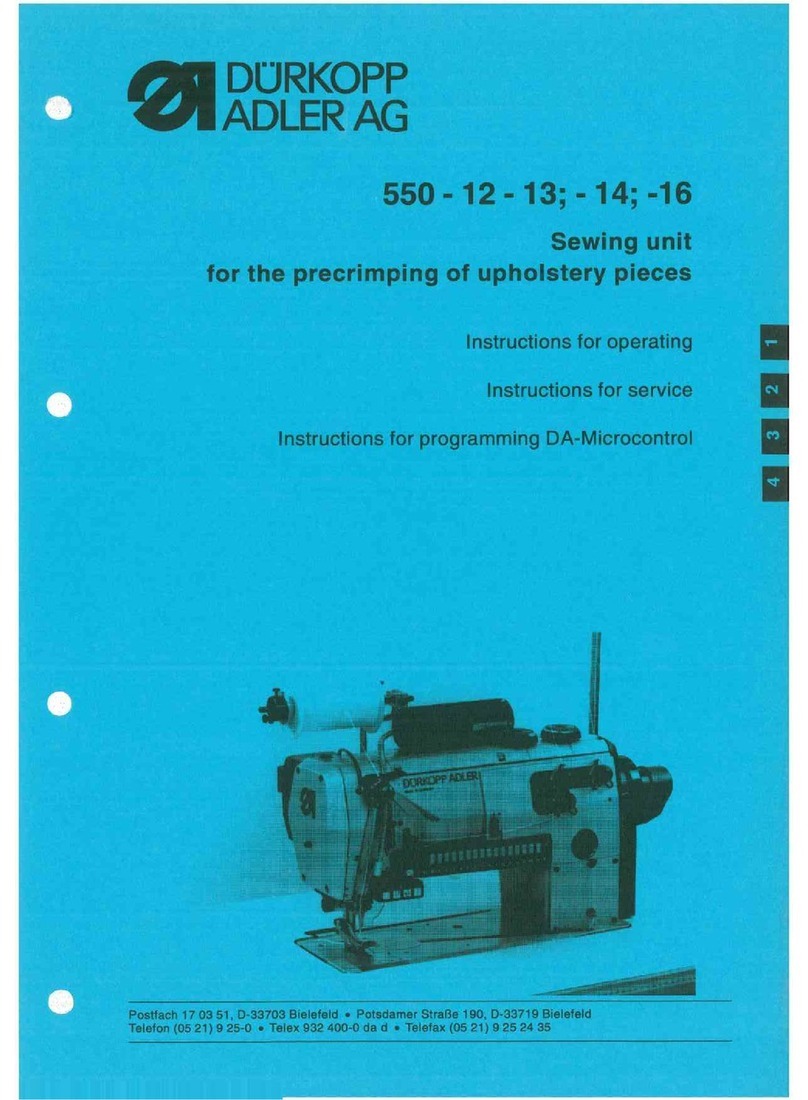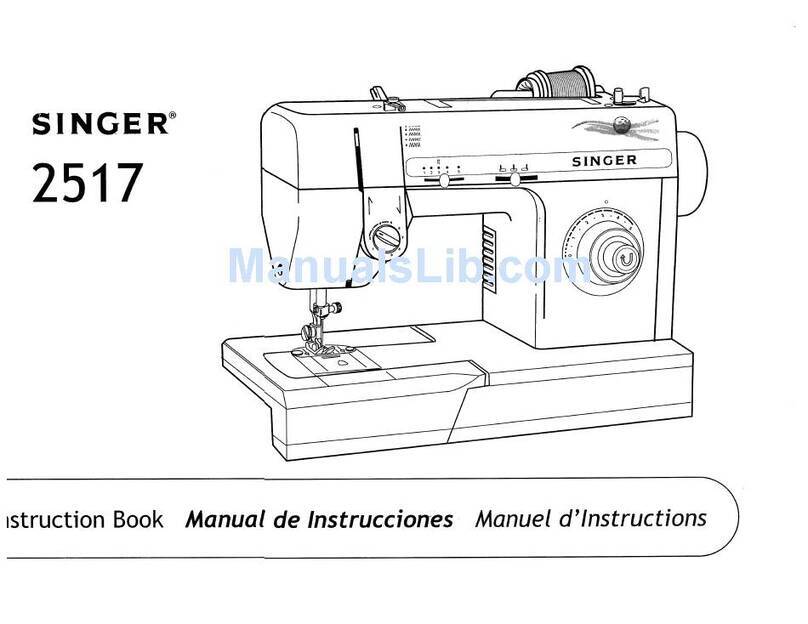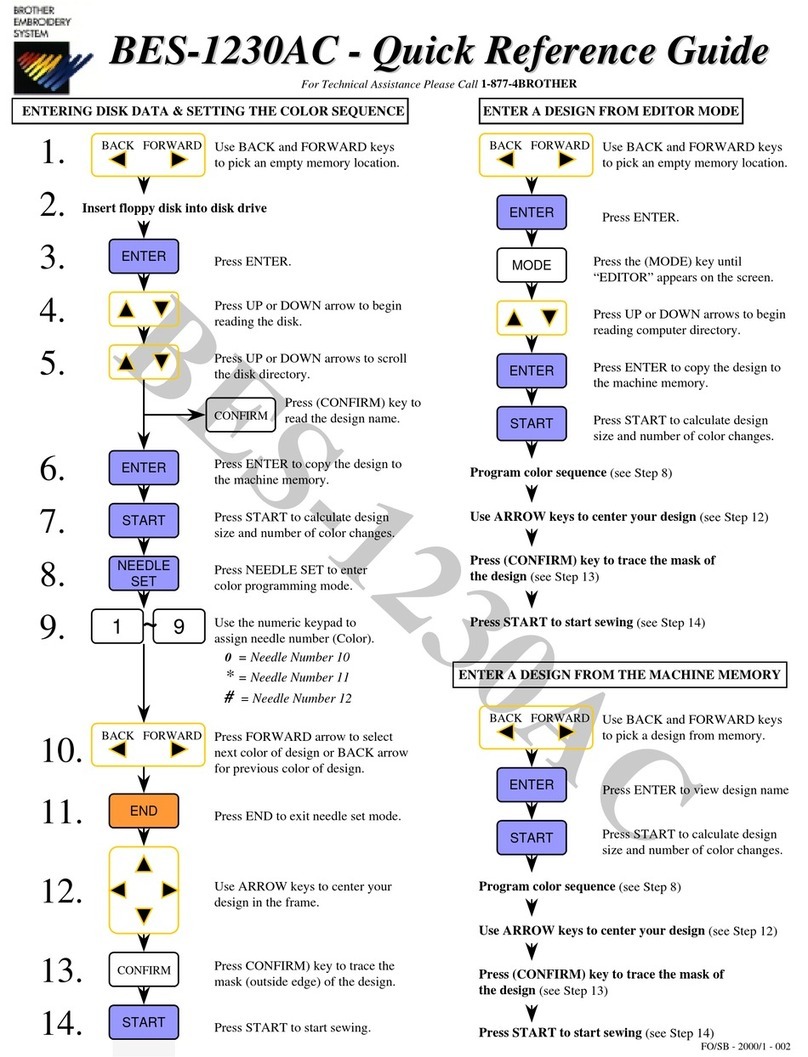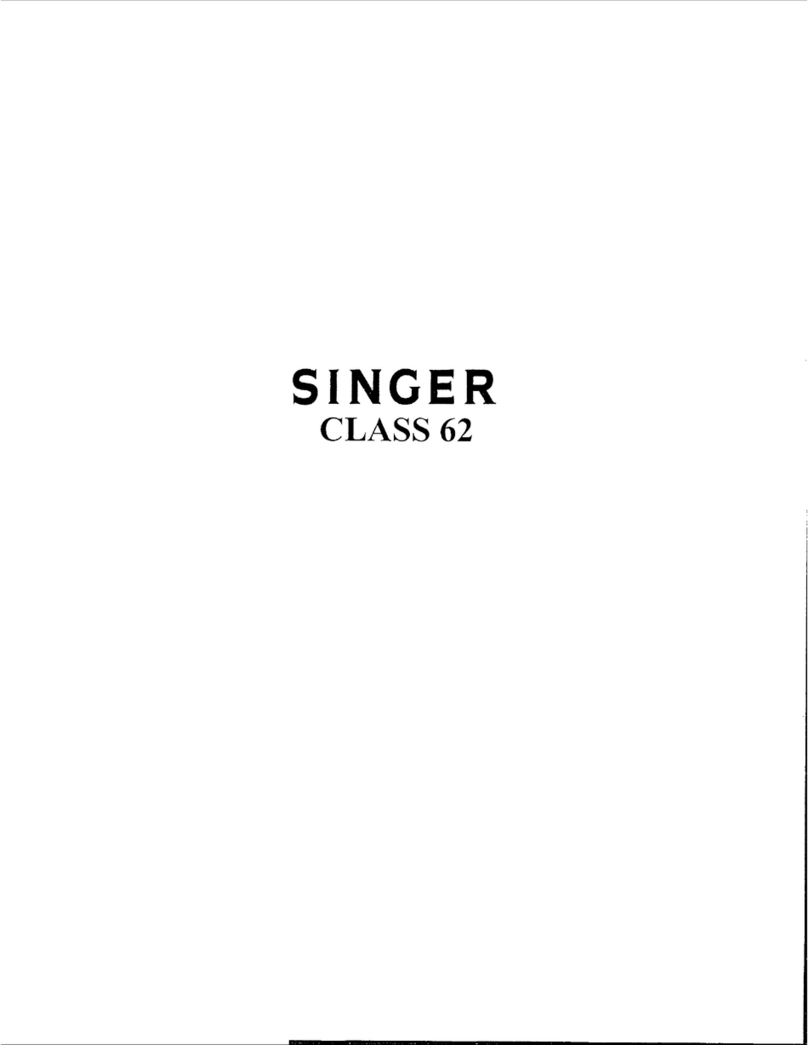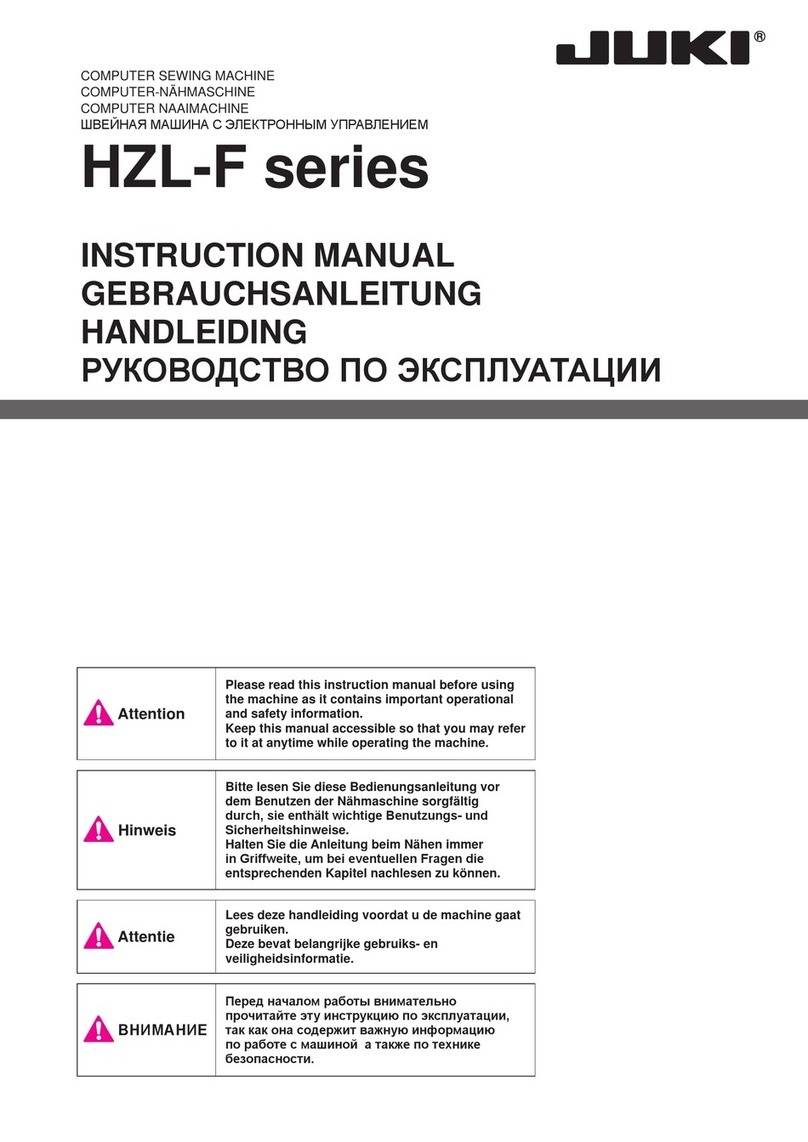Sunbeam Domestic 70 User manual

SMT081313
Domestic 70 Stitch Sewing Machine
Operating Instructions
Model No. SB700

Safety instructions
Component identication
Accessories
Fitting the snap-in sewing table
Connecting machine to the power source
Two-step presser foot lever
Attaching the presser foot holder
Winding the bobbin
Inserting bobbin
Changing the needle
Threading the upper thread
Automatic needle threader
Thread tension
Bringing up the lower thread
Finishing up
Matching needle / fabric / thread
How to choose your pattern
Straight stitching and needle position
Zig-zag sewing
Blind hem / lingerie stitch
Overlock stitches
Sewing on buttons
Utility sewing
Zippers and piping
Sewing with the hemmer foot
3 step zig-zag
Stitch selection
Smocking stitch
Sewing with the cording foot
Free motion darning
Practical stitches
Darning
Attaching lace
Applique
Twin needle
Quilting
Gathering x-foot
Patch work
Maintenance
Troubleshooting guide
03-04
05-06
07
08
09
10
11
12
13
14
15
16
17
18
19
20-21
22
23
24
25
26
27
28
29
30
31
32
33
34
35
36
37
38
39
40
41
42
43
44
45-46
Contents
02

Safety instructions
When using an electrical appliance,
basic safety precautions should
always be followed, including the
following:
Read all instructions before using this
sewing machine.
1. An appliance should never be left
unattended when plugged in.
2. Always unplug this appliance from
the electric outlet inmediately after
using and before cleaning.
Always unplug before re-lamping.
Replace bulb with same type rated 10
watts.
DANGER - To reduce the risk of
electric shock:
1. Do not allow to be used as a toy.
Close attention is necessary when this
appliance is used by or near children.
2. Use this appliance only for its
intended use as described in this
manual.
3. Never operate this appliance if it
has a damaged plug or cord, if it is not
working properly, if it has been
WARNING - To reduce the risk of
burn, re, electric shock, or injury
to persons:
dropped or damaged or dropped into
water.
4. Never operate this appliance with
any air openings blocked. Keep
ventilation openings of the sewing
machine and foot controller free from
accumulation of lint, dust and loose
cloth.
5. Keep ngers away from all moving
parts. Special care is required around
the sewing machine needle.
6. Always use the proper needle plate.
The wrong plate can cause the needle
to break.
7. Do not use bent needles.
8. Do not pull or push fabric while
stitching. It may deect the needle
causing it to break.
9. Switch the sewing machine o (”O”)
when making any adjustments in the
needle area, such as threading needle,
changing needle, threading bobbin, or
changing presser foot, and the like.
10. Always unplug sewing machine
from the electrical outlet when
removing covers, lubricating, or when
making any other user servicing
adjustments mentioned in the
instruction manual.
11. Never drop or insert any object
into any opening.
12. Do not use outdoors.
13. Do not operate where aerosol
spray products are being used or
where oxygen is being administered.
14. To disconnect, turn all controls to
the o (”O”) position, then remove
plug from outlet.
15. Do not unplug by pulling on cord.
To unplug, grasp the plug, not the
cord.
This sewing machine is intended for
household use only.
03

SAVE THESE INSTRUCTIONS
1. Do not allow to be used as a toy.
Close attention is necessary when this
appliance is used by or near children.
2. Use this appliance only for its
intended use as described in this
manual.
3. Never operate this appliance if it
has a damaged plug or cord, if it is not
working properly, if it has been
dropped or damaged or dropped into
water.
4. Never operate this appliance with
any air openings blocked. Keep
ventilation openings of the sewing
machine and foot controller free from
accumulation of lint, dust and loose
cloth.
5. Keep ngers away from all moving
parts. Special care is required around
the sewing machine needle.
6. Always use the proper needle plate.
The wrong plate can cause the needle
to break.
7. Do not use bent needles.
8. Do not pull or push fabric while
stitching. It may deect the needle
causing it to break.
9. Switch the sewing machine o (”O”)
when making any adjustments in the
needle area, such as threading needle,
changing needle, threading bobbin, or
changing presser foot, and the like.
10. Always unplug sewing machine
from the electrical outlet when
removing covers, lubricating, or when
making any other user servicing
adjustments mentioned in the
instruction manual.
Safety instructions
11. Never drop or insert any object
into any opening.
12. Do not use outdoors.
13. Do not operate where aerosol
spray products are being used or
where oxygen is being administered.
14. To disconnect, turn all controls to
the o (”O”) position, then remove
plug from outlet.
15. Do not unplug by pulling on cord.
To unplug, grasp the plug, not the
cord.
This sewing machine is intended for
household use only.
04 04

Component identication (Part 1)
1.
2.
3.
4.
5.
6.
7.
1
2
Thread tension dial
Presser foot pressure
Thread take-up lever
Thread cutting
Presser foot
Needle plate
Sewing table and accessory box
Bobbin stopper
Stitch length dial
Stitch width dial
Stitch display
Reverse sewing lever
Automatic threader (optional)
8.
9.
10.
11.
12.
13.
8
9
5
3
4
6
7
13
10
11
12
05

14.
15.
16.
17.
18.
19.
20.
16
23
Upper thread guide
Presser foot lever
Handle
Bobbin winder
Spool pin
Handwheel
Pattern selector dial
Power switch
Main plug socket
Bobbin thread guide
21.
22.
23.
17
20
21
22
18
19
Component identication (Part 2)
06

a.
b.
c.
d.
e.
f.
g.
h.
i.
j.
k.
l.
m.
Standard Accessories (1)
4 step buttonhole foot
L shape screwdriver
Seam ripper/brush
Lubricate oil
#14 needle x 3pcs (ORGAN brand)
Bobbins x 3pcs in total
Twin needle
Screw driver (small)
Screw driver (large)
Edge/quilting guide
Emboidering plate
Spool holder
All purpose foot
n.
o.
q.
r.
s.
t.
u.
v.
w.
x.
Optional Quilting Package (2)
Zipper foot with double edge
Button sewing foot
Blind hem foot
Hemmer foot
Quilting foot
Stain stitch foot
Overcasting foot
Darning/embroidering foot
Gathering foot
Cording foot
Accessories
07
(To order optional accessories, please
call us at: 1- 877-678-6232).

Fitting the snap-in sewing table
Hold the snap-in sewing table horizontal, and
push it in the direction of the arrow. (Fig.1)
The inside of the snap-in sewing table can be
utilized as an accessory box. To open, lift up at
the point of the arrow. (Fig.2)
08

Connecting machine to power source
Always make sure that the machine is unplugged from
power source and the main switch is on (O ) “0” when
the machine is not in use and before inserting or
removing parts.
- This machine is equipped with polarized plug which
must be used with an appropriate electrical outlet.
- Connect the machine to a power source as illustrated
(1/2).
-The power switch is located above the terminal box.
Your machine will not operate unless the switch is on
”I”. (1)
-Sewing light turns on automatically when the main
switch is on “I”.
-To start the machine, press the foot control (3). The
speed of the machine is regulated by the amount of
pressure exerted on the foot control.
CAUTION:
Consult a qualied electrician if in doubt as to connect
the machine to power source. Unplug power cord
when machine is not in use.
ATTENTION:
09

When sewing several layers or thick
fabrics, the presser foot can be raised a
second stage for easy positioning of
the work. (A)
The presser foot pressure of the
machine has been pre-set and requires
no particular readjustment according
to the type of fabric (light or heavy
weight).
However, if you need to adjust the
presser foot pressure, turn the presser
foot pressure dial as shown above.
For sewing very thin fabric, loosen the
pressure by turning the dial counter
clockwise, and for heavy fabric, tighten
by turning it clockwise.
Two-step presser foot lever
10

Attaching the presser foot holder
Turn power switch to “0” before carrying out
any of the operations below.
Raise the needle to its highest position and
raise the presser foot lever. Attach the presser
foot holder (b) to the presser foot bar (a). (1)
ATTENTION:
Lower the presser foot holder (b) until the
cut-out (c) is directly above the pin (d). (2)
Lower the presser foot holder (b) and the
presser foot (f) will engage automatically.
Attaching the presser foot:
Raise the presser foot.
Release the pressure foot by raising lever (e)
located at the back of the foot holder. (3)
Removing the presser foot:
Attach the seam guide (g) in the slot as
illustrated. Adjust the distance as required for
hems, pleats, etc.... (4)
Attaching the seam guide:
11

Place an empty bobbin winder spindle.
Take the thread from the spool through the
bobbin winder tension disc. (1)
Wind the thread a few times by hand around
the empty bobbin in a clockwise direction. Push
the bobbin to the right towards the bobbin
winding position. (2)
Press the foot control gently. The bobbin will
stop winding when it is full. Push the bobbin to
the left to “sewing position” and remove it.
Winding the bobbin
When the bobbin winder spindle is in “bobbin
winding” position, the machine will not sew and
the hand wheel will not turn. To start sewing,
push the bobbin winder spindle to the left
(sewing position).
NOTE:
a. Spool pin
12

- Open the hinged cover. (1)
- Hold the bobbin case with one hand. Insert
the bobbin so that the thread runs in a
clockwise direction (arrow). (2)
- Pull the thread through the slot, down and to the
left until it enters the delivery eyelet (rectangular
opening) under the tension spring. (3)
- Hold the bobbin case by the hinged latch. (4)
- Insert the bobbin case fully into the shuttle
race and release the latch. Make sure that the
metal nger ts into the notch at the top of the
race cover. (5)
Inserting bobbin
Turn power switch to (O) “0” before inserting
or removing the bobbin.
When inserting or removing the bobbin, the
needle must be fully raised.
ATTENTION:
13

Changing the needle
Turn power switch to (O) “0” before inserting or removing the needle.
Replace the needle at the rst sign of thread breakage or skipped
stitches. Select the correct type and size of needle for the fabric to be
sewn. Turn the balance wheel towards you until the needle is at
highest position. Loosen the needle clamp screw (A) and tighten again
after inserting the new needle. (1)
The at side of the needle shaft should be facing away from you (B).
Push the needle up (C) into the needle clamp as far as it will go (D).
Tighten the needle clamp screw rmly. The sewing needle must always
be straight and sharp for smooth sewing. Replace the needle (2) if it is
bent (A), blunt (B) or the point is damaged (C).
CAUTION:
14

Before threading, turn power
switch to (O) “0”.
Raise the needle bar to its
highest position. Follow exactly
the numbered threading
sequence illustrated below. If you
skip a step or fail to properly
engage the thread in any of the
thread guides, the machine will
not sew properly. (1-5)
Continue to draw the thread
down and into the needle bar
thread guide. Insert the thread
through the eye of the needle
from front to back. Leave about
10cm (4”) of thread loose behind
the needle. (6)
a. Spool pin
b. Spool holder
CAUTION:
Threading the upper thread
15

- Raise the needle to its highest position.
- Press lever (A) right down.
- The threader automatically swings to the threading position (B).
- Take the thread around the hook (C).
- Take the thread in front of the needle round the hook (D) from bottom
to top.
- Release lever (A).
- Pull the thread through the needle eye.
Automatic needle threader
Turn power switch to (O) “0” before carrying out any of the following:
*The automatic needle threader is an optional accessory not supplied
with your machine (to purchase call: 877-678-6232).
ATTENTION:
16

Thread tension
The bobbin thread tension has been adjusted at
the factory and readjustment is usually not
required.
NOTE:
To test the bobbin thread tension, remove the
bobbin case and bobbin from the machine and
hold the bobbin case suspended by the thread.
Shake it once or twice. If the tension is correct,
the thread will unwind by about an inch or two.
If the tension is too tight, it will not unwind. If
the tension is too loose, the thread will unwind
for more than two inches. To adjust, turn the
small screw on the side of the bobbin case. (1)
Lower thread tension
Basic thread tension setting: “4”. (2)
To increase the tension, turn the dial up to a
higher number. To reduce the tension, turn the
dial to a lower number.
A. Normal thread tension.
B. Thread tension too loose.
C. Thread tension too tight.
Upper thread tension
17

Hold the upper thread with the left hand. Turn the handwheel towards
you with your right hand until the needle goes down and comes up
again to its highest position. (1)
- Lightly draw the needle thread forming a loop with the bobbin thread.
The upper thread should have caught the lower thread in a loop.
- Pull the needle thread toward you and the lower thread will come up
from the bobbin in a large loop. (2) Pull about 15cm (6”) of both threads
away from you under the presser foot.
Bringing up the lower thread
18

Turn the handwheel towards you to bring
the thread take up lever to its highest
position. Raise the presser foot and draw the
fabric away from you.
Removing the fabric
Hold the threads behind the presser foot.
Using both hands, guide them to the slit (B)
at the rear of the presser bar and press down
to cut the thread. You can also use the thread
cutter on the side of the machine.
Cutting the thread
Reverse sewing is used for locking the end of
seams and where reinforcement is needed.
At the end of seam, press down the reverse
sewing lever and touch the foot control
lightly. Sew a few reverse stitches. Release
the lever and the machine will sew forwards
again. (A)
Finishing up
19
Reverse sewing

IMPORTANT: Match needle size to thread size and weight of fabric.
Matching needle / fabric / thread
9-11 (65-75)
NEEDLE
SIZE
FABRICS THREAD
Lightweight fabrics-thin cottons, voile,
serge, silk, muslin, Qiana, interlocks,
cotton knits, tricots, jerseys, drapes,
woven polyester, shirt & blouse fabrics.
Light-duty thread in cotton, nylon or
polyester.
12 (80) Medium weight fabrics-cotton, satin,
kettleclote, sailcloth, double knits,
lightweight woolens.
14 (90) Medium weight fabrics-cotton duck,
woolen, heavier knits, terrycloth,
denims.
16 (100) Heavyweight fabrics-canvas, woolens,
outdoor tent and quilted fabrics,
denims, upholstery material (light to
medium).
18 (110) Heavy woolens, overcoat fabrics,
upholstery fabrics, some leathers and
vinyls.
Heavy duty thread, carpet thread.
(Use heavy foot pressure-large
numbers.)
Most threads sold are medium size
and suitable for these fabrics and
needle sizes. Use polyester threads
on synthetic materials and cotton
on natural woven fabrics for best
results. Always use the same thread
on top and bottom.
20
This manual suits for next models
1
Table of contents
Other Sunbeam Sewing Machine manuals
